
Why indoor coverage is so important
80% of mobile calls begin and end in a building
Wi-Fi and wireless outdoor coverage are no longer enough. For many wireless customers, in-building coverage is now as important as plumbing and electricity. More and more buildings are providing indoor coverage to keep tenants, residents, and visitors happy.
In-Building Resources
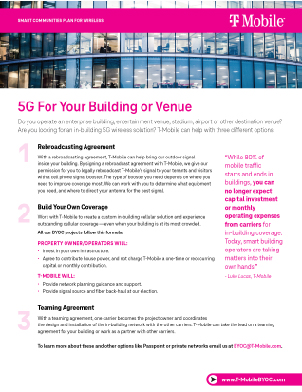
5G for Your Building or Venue
Are you looking for an in-building 5G wireless solution? Today, smart building owners are taking matters into their own hands.
 DOWNLOAD FACT SHEET
DOWNLOAD FACT SHEET
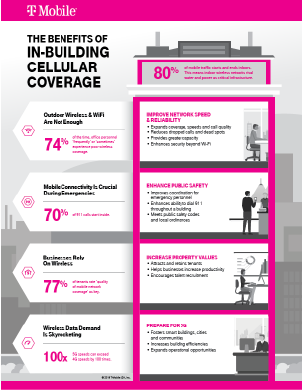
Benefits of In-building Cellular Coverage
Learn the benets of a strong, reliable, in-building cellular network with this handy infographic.
 DOWNLOAD FACT SHEET
DOWNLOAD FACT SHEET
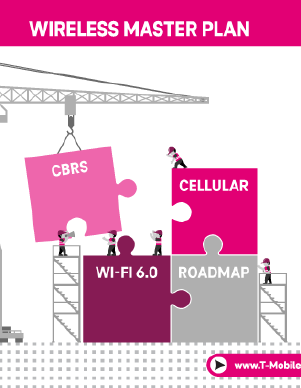
In-Building Wireless Master Plan
Do you have a long-term plan for wireless coverage in your building?
 DOWNLOAD FACT SHEET
DOWNLOAD FACT SHEET
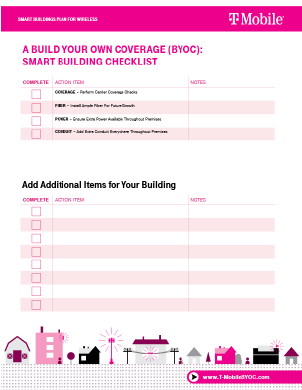
Smart Building Checklist
Smart buildings have a wireless plan. Make sure your building is future-ready with our Smart Building Checklist.
 DOWNLOAD CHECK LIST
DOWNLOAD CHECK LIST
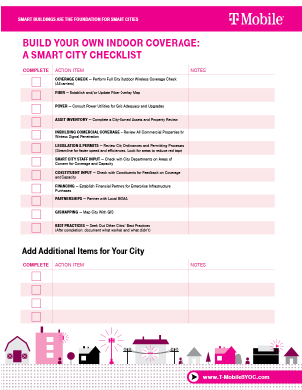
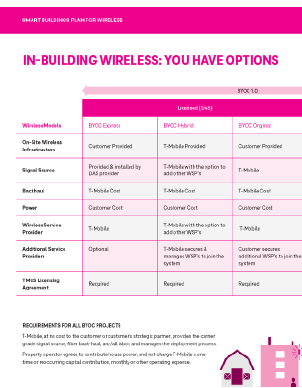
BYOC: You Have Options
When it comes to in-building wireless solutions, there are many BYOC options.
 DOWNLOAD FACT SHEET
DOWNLOAD FACT SHEET
Who needs indoor coverage?












What building managers, operators and architects say
 In-building cellular coverage in all areas of buildings is imperative
In-building cellular coverage in all areas of buildings is imperative
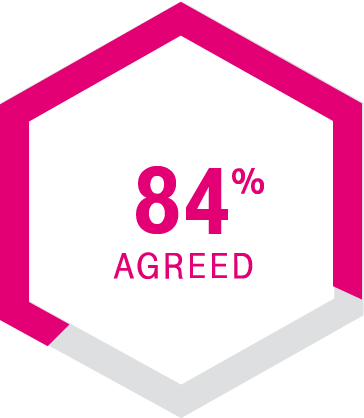 Fitting buildings with optimal in-building cellular coverage would improve employee productivity
Fitting buildings with optimal in-building cellular coverage would improve employee productivity
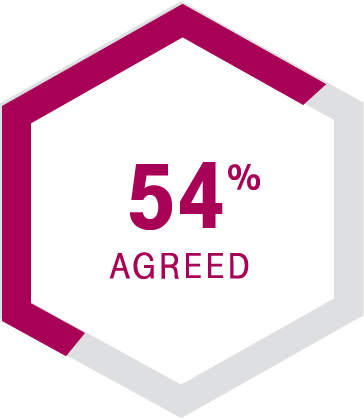 Wireless connectivity makes a building more desirable
Wireless connectivity makes a building more desirable
Improving In-Building Cellular Coverage For The “Middleprise”
T-Mobile is committed to helping building owners and operators improve their in-building connectivity no matter what size of the building. That’s why we’ve gathered these options for the “middleprise” (venues between 100,000 square feet and climbing to 500,000 like hotels, hospitals, colleges, retail, and multi-level class A office towers) to improve the in-building wireless experience for tenants and guests.

“Middleprise” Resources

5G for Your Building or Venue
Are you looking for an inbuilding 5G wireless solution? Today, smart building owners are taking matters into their own hands. Learn how with this guide.
 DOWNLOAD FACT SHEET
DOWNLOAD FACT SHEET
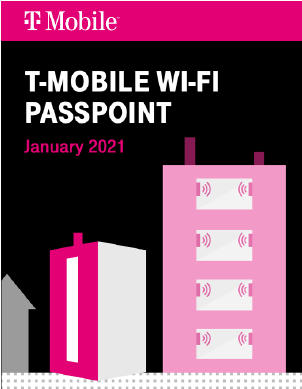
T-Mobile Wi-Fi Passpoint Network
Learn how T-Mobile can help you set up a Passpoint enabled Wi-Fi network.
 DOWNLOAD FACT SHEET
DOWNLOAD FACT SHEET

T-Mobile Wi-Fi Passpoint Network User Agreement
Download T-Mobile’s Network User Agreement for Passpoint.
 DOWNLOAD USER AGREEMENT
DOWNLOAD USER AGREEMENT

T-Mobile Partner: CEL-FI
Learn how Cel-Fi offers industry-leading signal gain for any facility!
 DOWNLOAD PDF
DOWNLOAD PDF

T-Mobile Partner: Commscope
Learn more about "Middleprise" solutions that partner well with BYOC.
 DOWNLOAD PDF
DOWNLOAD PDF
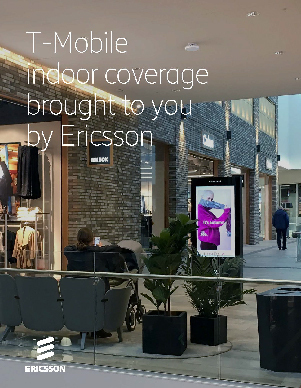
T-Mobile Partner: Ericsson
Learn more about "Middleprise" solutions that partner well with BYOC.
 DOWNLOAD PDF
DOWNLOAD PDF
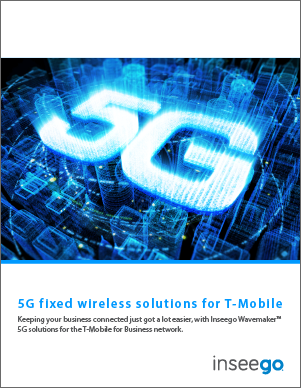
T-Mobile Partner: inseego
Learn more about "Middleprise" solutions that partner well with BYOC.
 DOWNLOAD PDF
DOWNLOAD PDF
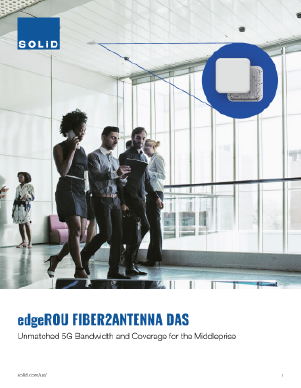
T-Mobile Partner: SOLiD
Reliable “Middleprise” coverage is simple with SOLiD edgeROU and BYOC.
 DOWNLOAD PDF
DOWNLOAD PDF

T-Mobile Partner: Wilson Electronics
Learn more about "Middleprise" solutions that partner well with BYOC.
 DOWNLOAD PDF
DOWNLOAD PDF
Build your own coverage with T-Mobile
T-Mobile’s Build Your Own Coverage (BYOC) program helps building owners, operators and commercial developers design and develop indoor wireless networks. We help you deliver wireless building amenities demanded by tenants, workers and visitors.

BYOC Resources
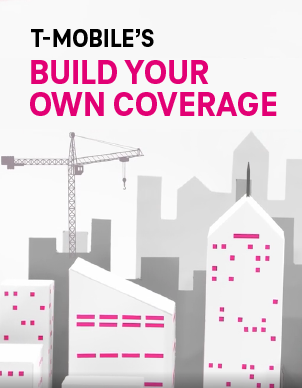
Build Your Own Coverage Video
Watch this short video to learn how BYOC can help you get the indoor coverage you need.
 WATCH THE VIDEO
WATCH THE VIDEO
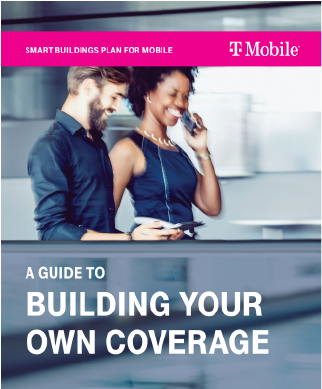
Guide to Building Your Own Coverage
Download our brochure for an overview of the BYOC program, and T-Mobile’s 6- step process to better inbuilding coverage.
 DOWNLOAD BROCHURE
DOWNLOAD BROCHURE

BYOC: You Have Options
Learn the different options you have in partnering with T-Mobile to Build Your Own Coverage.
 DOWNLOAD FACT SHEET
DOWNLOAD FACT SHEET
Benefits of BYOC

FASTER SPEED AND RELIABILITY
Indoor coverage can provide faster data speeds with fewer dropped calls.
Enhanced public safety
Tenants feel safer with E911 vertical location accuracy and emergency alerts.
Increased security
4G LTE and 5G are inherently more secure than Wi-Fi.
Higher property values
In-building coverage is a highly valued amenity that tenants demand.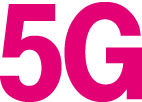
Ready for 5G
Stay ahead of the curve as 5G networks become more common.Case Studies
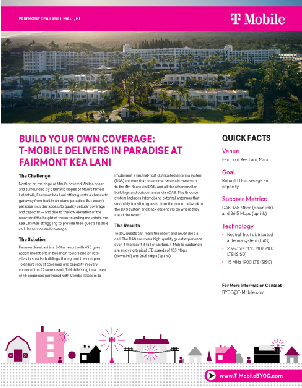
Maui, HI - Fairmont Kea Lani
This remote location need a creative solution to improve visitor's cell reception.
 DOWNLOAD CASE STUDY
DOWNLOAD CASE STUDY
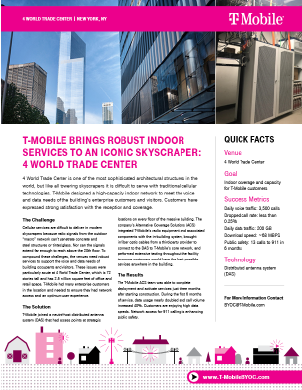
New York, NY - 4 World Trade Center
One of the most sophisticated architectural structures in the world needed a custom indoor network.
 DOWNLOAD CASE STUDY
DOWNLOAD CASE STUDY
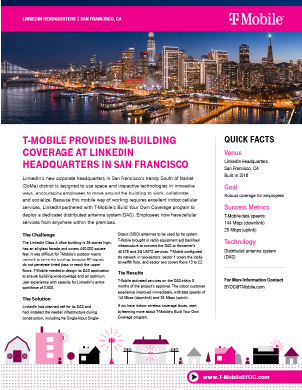
San Francisco, CA - LinkedIn Headquarters
A collaborative and mobile work environment require robust indoor cellular service.
 DOWNLOAD CASE STUDY
DOWNLOAD CASE STUDY
Engaging BYOC in five simple steps
Step 1
Step 1
Sign-up
Weeks 1 - 4Reach out for a pre-project review, meet the BYOC team, and sign up by submitting your completed registration form
 Registration Form
Registration Form
STEP 3
STEP 3
Design review
Weeks 4–8We reach out to your integrators, then finalize the signal source
 Design Standards
Design Standards
STEP 4
STEP 4
License agreement development
Weeks 4–8Sign license agreement, approve design, develop lease exhibit drawings
 License Agreement
License Agreement

